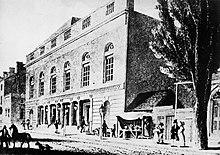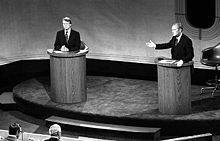
Sarasota is a city in and the county seat of Sarasota County, Florida, United States. It is located in Southwest Florida, the southern end of the Greater Tampa Bay Area, and north of Fort Myers and Punta Gorda. Its official limits include Sarasota Bay and several barrier islands between the bay and the Gulf of Mexico. Sarasota is a principal city of the North Port-Bradenton-Sarasota, FL Metropolitan Statistical Area. According to the 2020 U.S. census, Sarasota had a population of 54,842, up from 51,917 at the 2010 census.
Events from the year 1809 in literature.

Circus clowns are a sub-genre of clowns. They typically perform at circuses and are meant to amuse, entertain and make guests laugh.

Avenue of the Arts is a city-designated arts cultural district on a segment of Broad Street in Philadelphia, Pennsylvania, United States that includes many of the city's cultural institutions, most notably the theater district south of City Hall. The designation can be found as far south as Washington Avenue and as far north as the Cecil B. Moore neighborhood.
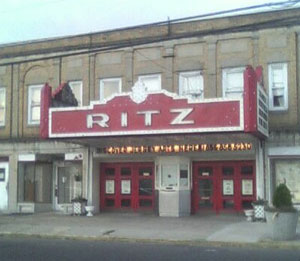
The Ritz Theatre is a theater located in Haddon Township, New Jersey. The venue is owned and operated by The Ritz Theatre Company, a nonprofit organization. The theater was added to the New Jersey and National Register of Historic Places in 2002.

The equestrian theatre company of Pépin and Breschard, American Victor Pépin and Frenchman Jean Baptiste Casmiere Breschard, arrived in the United States from Madrid, Spain, in November 1807. They toured that new country until 1815. From their arrival until the present day, what is now known as the traditional circus has had a presence in North America.

The Grand Opera House is an opera house located at the corner of 8th and Iowa Streets in Dubuque, Iowa that was built in 1890. It was listed on the National Register of Historic Places in 2002.

The Barrymore Awards for Excellence in Theatre is an annual, nationally-recognized award program that is sponsored by Theatre Philadelphia for professional theater productions in the Greater Philadelphia area. Each season culminates with an awards ceremony.
Jean Baptiste Casmiere Breschard was a circus owner and equestrian performer in the Circus of Pepin and Breschard.
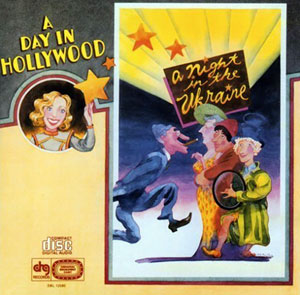
A Day in Hollywood / A Night in the Ukraine is a musical comedy consisting of two essentially independent one-act plays, with a book and lyrics by Dick Vosburgh and music by Frank Lazarus. Additionally, songs by other composers are incorporated into the score. The musical premiered in the West End and then ran on Broadway.
Frank Vincent Ferrante is an American stage actor, comedian and director known for his improvisation and audience interactive comedy. He has performed as Groucho Marx in the Arthur Marx/Robert Fisher play Groucho: A Life in Revue and in his own An Evening With Groucho. Ferrante was nominated for the Laurence Olivier Award for 'Comedy Performance of the Year' for the title role in Groucho: A Life in Revue in London's West End in 1987. He had previously won New York's 1987 Theatre World Award for 'Outstanding Debut' for the same role.
Jennie Elizabeth Eisenhower is an American actress, director, and realtor. She has performed in Off-Broadway theater productions and in regional theatre, being nominated for seven Barrymore Awards and winning two of them. She has played minor roles in several feature films. She is a great-granddaughter of Dwight D. Eisenhower and granddaughter of Richard Nixon, both presidents of the United States.
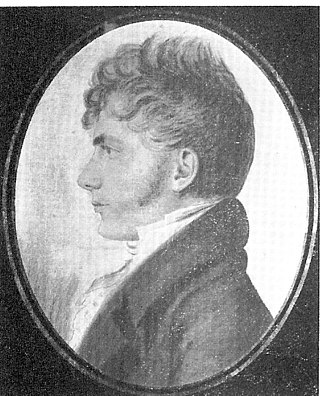
Peter Grain was a French-American artist who achieved success in the United States. Known for his panoramas, landscapes, portraits, dioramas, portrait miniatures, and theatrical designs, he was also an architect and the author of at least one stage play. His family was involved in theatrical design in New York, Philadelphia and other major American cities for at least two generations.

Hippodrama, horse drama, or equestrian drama is a genre of theatrical show blending circus horsemanship display with popular melodrama theatre.
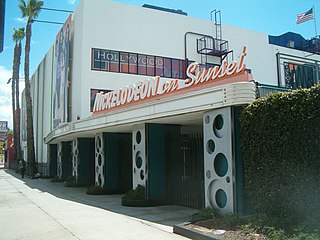
The Earl Carroll Theatre was a historic stage facility located at 6230 Sunset Boulevard in Hollywood, California. It was built by showman Earl Carroll and designed in the Streamline Moderne style by architect Gordon Kaufmann in 1938. The theatre has been known by a number of names since, including Moulin Rouge from 1953 to 1964 and the Aquarius Theater in the 1960s and 1970s. From 1997 to 2017, it was officially known as Nickelodeon on Sunset, housing the West Coast production of live-action original series produced for the Nickelodeon cable channel.
The performing arts in Detroit include orchestra, live music, and theater, with more than a dozen performing arts venues. The stages and old time film palaces are generally located along Woodward Avenue, the city's central thoroughfare, in the Downtown, Midtown, and New Center areas. Some additional venues are located in neighborhood areas of the city. Many of the city's significant historic theaters have been revitalized.
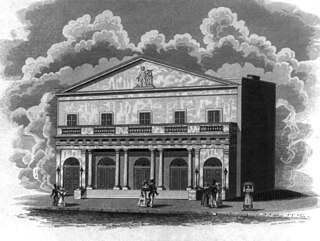
The Arch Street Theatre, popularly referred to as The Arch, was one of three Philadelphia-based theaters for plays during the 19th century; the other two were the Walnut Street Theatre and the Chestnut Street Theatre. The Arch Street Theatre opened on October 1, 1828, under the management of William B. Wood. The building's architect was John Haviland.

Olympic Theatre was the name of five former 19th and early 20th-century theatres on Broadway in Manhattan and in Brooklyn, New York.
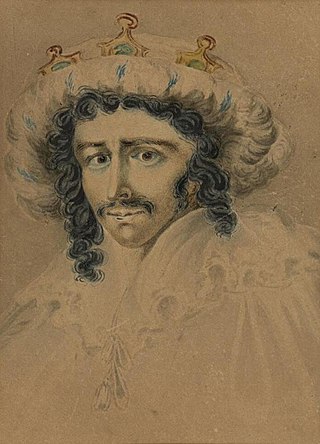
The Anthony Street Theatre was an early New York City theatre which operated intermittently from 1812 to 1821. It opened as the Olympic Theatre in May 1812 and had multiple names during its brief existence.

National Hall is a former venue in Philadelphia, Pennsylvania, located at 1222–24 Market Street, between Twelfth and Thirteenth Streets. It was one of the most popular venues in the city, site of concerts, lectures, meetings, and political speeches. It opened on January 8, 1856, with a "grand operatic concert". While it existed, from 1856 to 1873, it was the main venue in Philadelphia for speakers for abolitionism and other progressive causes.





